Holiday Travel Chaos: A Look Back at Christmas Travel
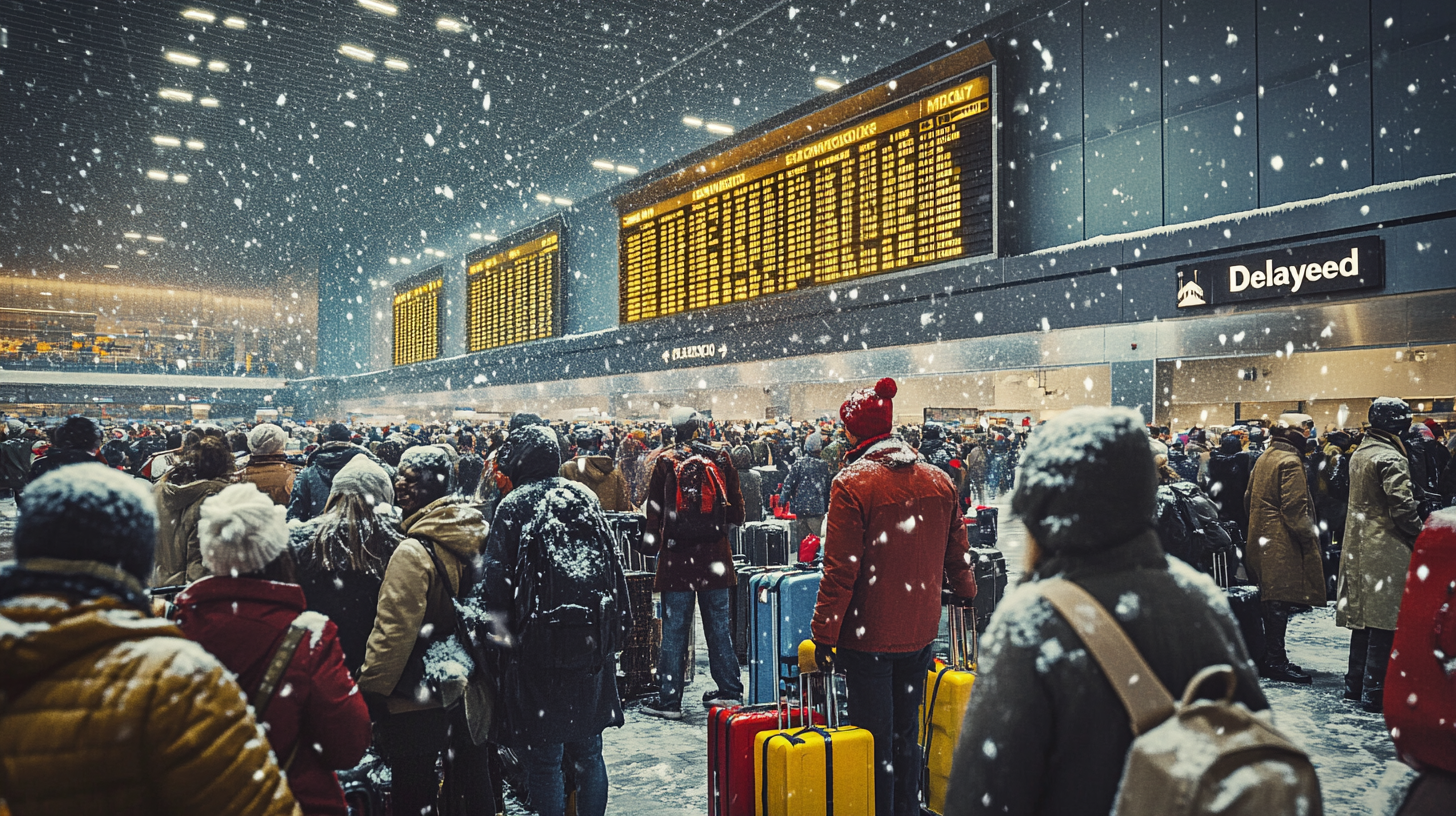
The holiday season is traditionally a time of joy, family reunions, and cherished traditions. For many, it’s the one occasion to reconnect with loved ones after long separations, making the journey home all the more significant. However, the recent Christmas travel period was marked by unprecedented challenges that left countless travelers stranded, facing delays and cancellations, and dealing with an overwhelming sense of frustration. Tales of families sleeping in airports on Christmas Eve and travelers spending hours on hold with customer service became all too common. From severe weather conditions wreaking havoc across the nation to technical glitches grounding flights, this past holiday season tested the resilience of millions of Americans on the move.
A Record-Breaking Year for Holiday Travel
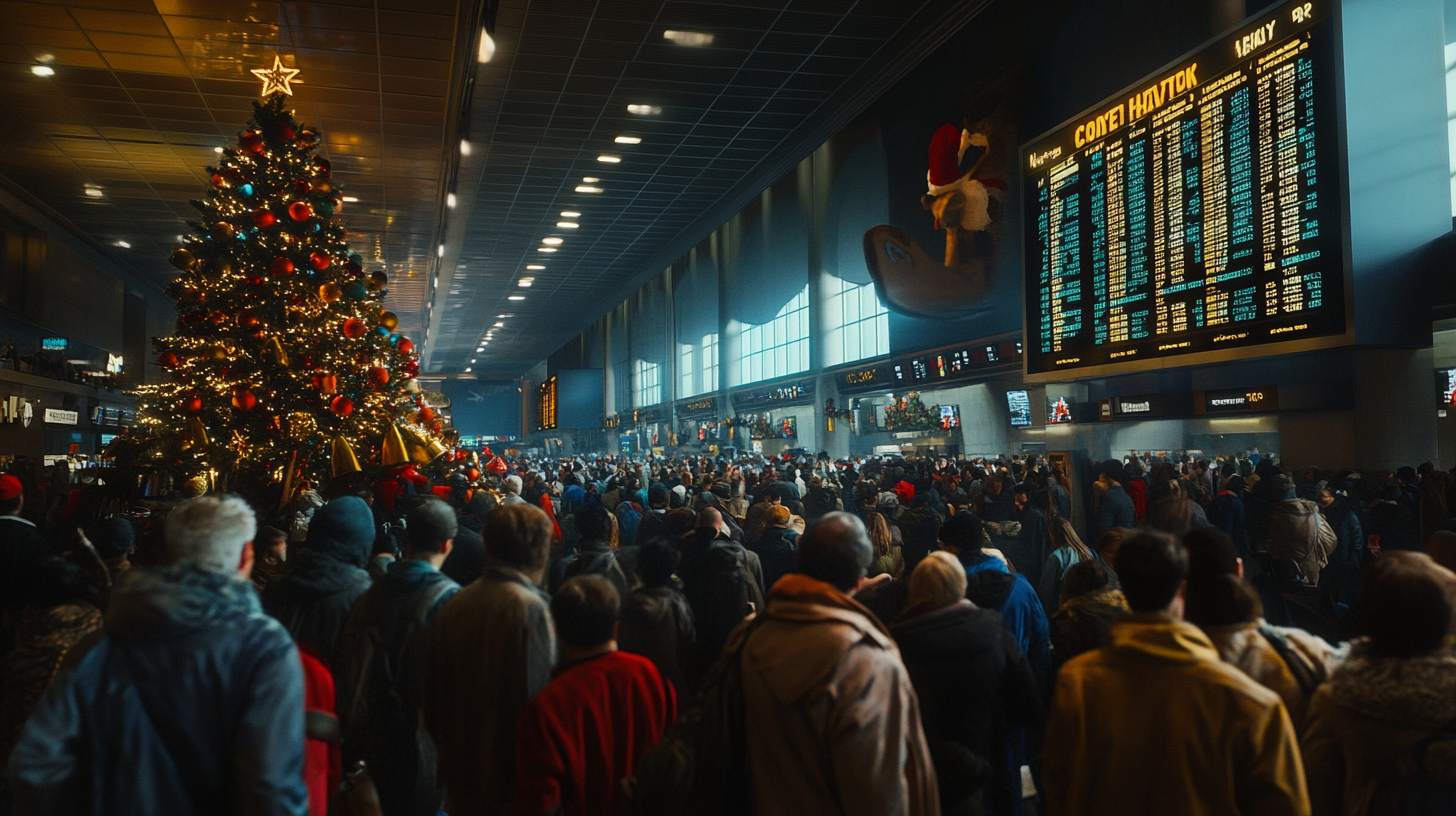
Despite lingering concerns over the pandemic, Americans were eager to return to their holiday traditions, leading to a record-breaking year for holiday travel. This holiday season was projected to be one of the busiest on record. According to the American Automobile Association (AAA), over 119 million Americans planned to travel 50 miles or more between December 21 and January 1, surpassing the previous record set in 2019. This surge was attributed to factors such as widespread vaccination, easing of travel restrictions, and a strong desire to reconnect with family and friends. The vast majority, approximately 107 million travelers, took to the roads, encouraged by lower gas prices and the flexibility of car travel during uncertain times. Air travel also saw significant numbers, with an estimated 7.85 million passengers taking to the skies, setting a new record for the season. The skies were filled with millions returning to air travel after pandemic lockdowns , reflecting a renewed confidence in air travel safety measures.
The Perfect Storm: Weather Disruptions Across the Nation
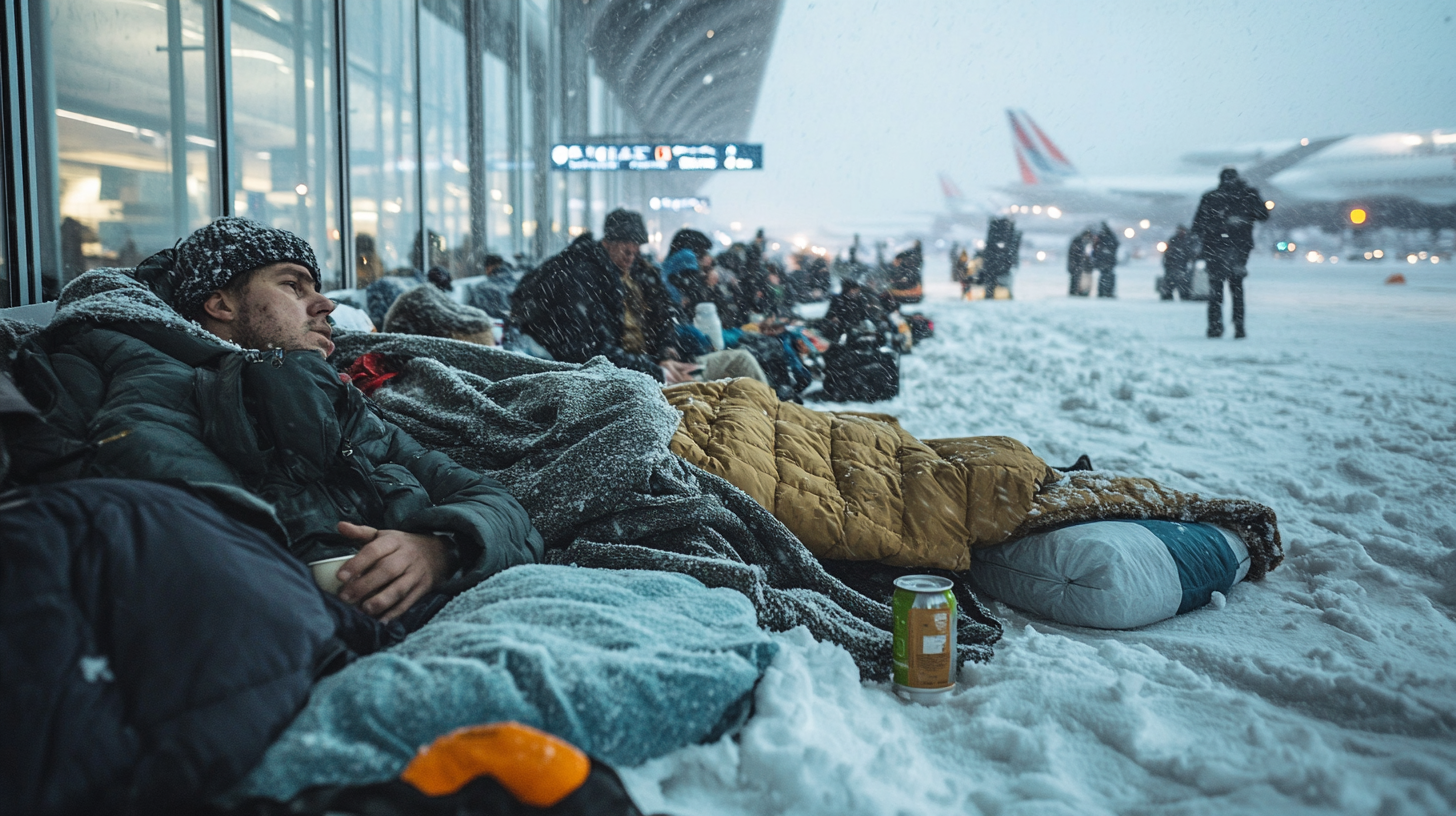
As the masses embarked on their journeys, Mother Nature had her own plans. Severe winter weather swept across the United States, presenting a myriad of challenges that turned what should have been routine trips into treacherous endeavors. The convergence of multiple weather phenomena created a perfect storm that crippled transportation networks:
- Snowstorms: Seventeen states experienced significant snowfall, with Montana reporting up to 18 inches of snow. The Great Lakes and Northeast regions faced relentless lake-effect snow and bitter cold, particularly impacting areas in New York and New England. In some towns, communities were cut off due to impassable roads , leaving residents isolated during the holidays.
- Heavy Winds: The northern Rockies and Plains were battered by severe winds reaching speeds that posed risks of toppling high-profile vehicles, causing hazardous driving conditions. Truck drivers faced tremendous challenges navigating windy mountain passes , leading to delays in deliveries and increased road accidents.
- Rain and Thunderstorms: The South grappled with torrential rain and thunderstorms, leading to slippery roads and reduced visibility. Flash floods in certain areas resulted in road closures and detours, adding hours to some travelers’ journeys.
- Atmospheric Rivers: The West Coast, especially the Pacific Northwest, faced atmospheric river events bringing heavy rain and mountain snow, resulting in potential flash flooding and road closures. Residents in affected areas dealt with emergency evacuations due to rising floodwaters , disrupting holiday plans and endangering communities.
- Fog and Ice: Dense fog along the Gulf Coast and freezing rain in the Northeast added to the treacherous travel conditions. Black ice caused numerous vehicular accidents, as drivers underestimated the dangers of seemingly clear roads.
- Bomb Cyclone: An unprecedented weather system, including a historic bomb cyclone, threatened to disrupt travel plans further. This powerful system brought severe winds and snow, exacerbating transportation challenges, particularly in the Pacific Northwest. The sudden intensification of this storm led to widespread power outages and emergency declarations , impacting thousands of households over the holiday.
These widespread weather events led to significant travel disruptions that rippled across the country. Flight delays and cancellations became commonplace, with major airports such as San Francisco, Dallas-Fort Worth, Seattle, and others experiencing operational challenges. At Chicago O’Hare International Airport, one of the nation’s busiest hubs, thousands of passengers spent the night due to cancelled flights , turning terminals into makeshift hotels. Roads were no better, as snow-covered highways and stormy conditions made driving perilous. The closure of major interstate highways in several states stranded motorists and caused logistical nightmares for emergency services.
Technical Glitches and Airline Challenges
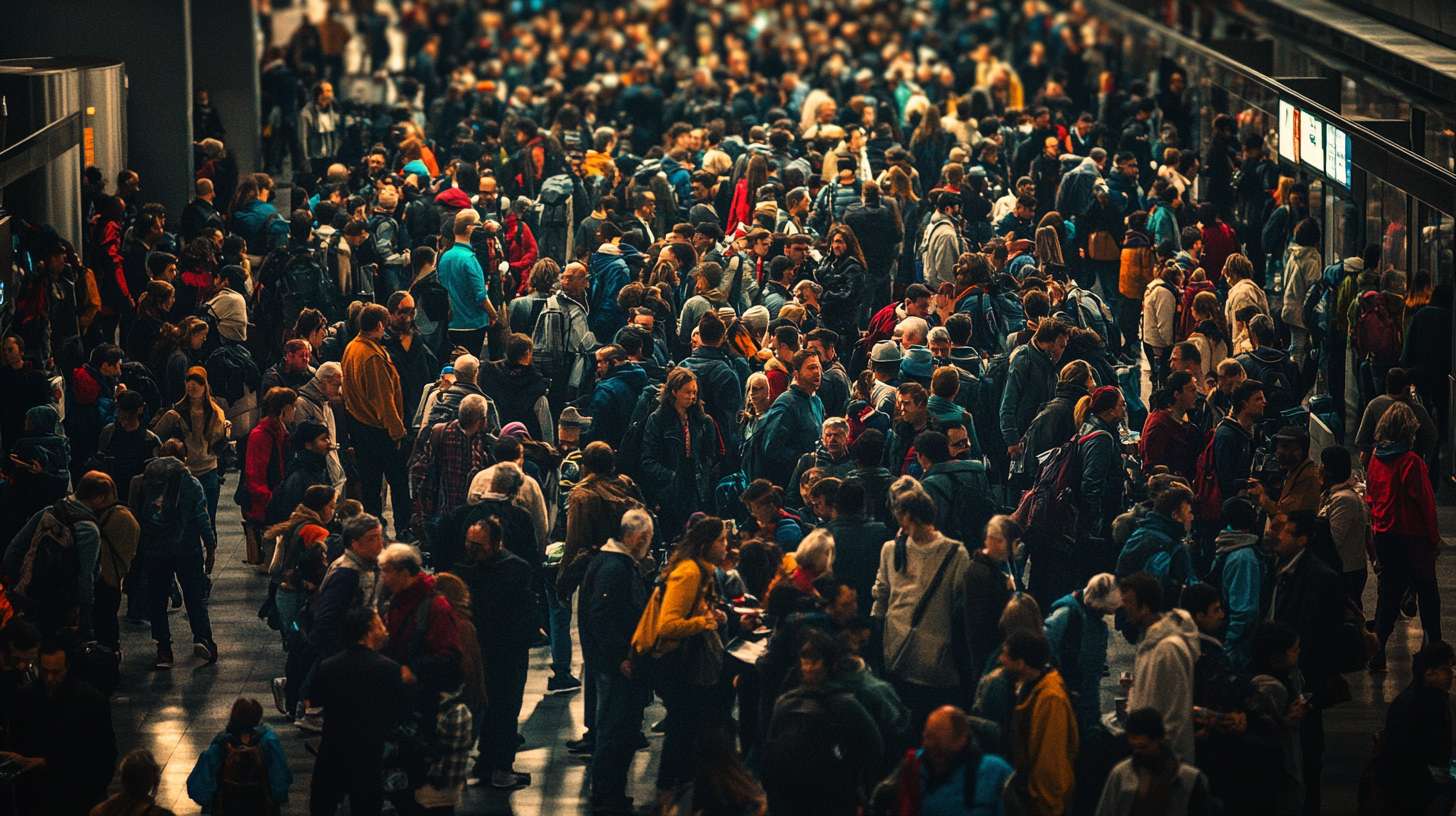
Adding to the chaos, technical issues plagued air travel during this critical period, compounding the problems caused by inclement weather. On Christmas Eve, American Airlines faced a major technical glitch that temporarily grounded all flights nationwide. Cited as a “vendor technology issue,” the glitch impacted nearly 900 flights, causing substantial delays across major hubs including Dallas-Fort Worth, Miami, and Charlotte. Passengers were left waiting for over 90 minutes, with limited communication from the airline. For some, this meant missing long-awaited family gatherings; stories emerged of elderly grandparents waiting at airports for reunions that never happened , highlighting the personal toll of these disruptions.
The Federal Aviation Administration (FAA) also resolved a separate tech issue that had caused flight disruptions earlier. Such technical problems, combined with the severe weather, amplified the difficulties faced by travelers. The convergence of these issues led to unprecedented levels of flight cancellations and delays , straining both airline operations and passenger patience.
Airports Under Pressure
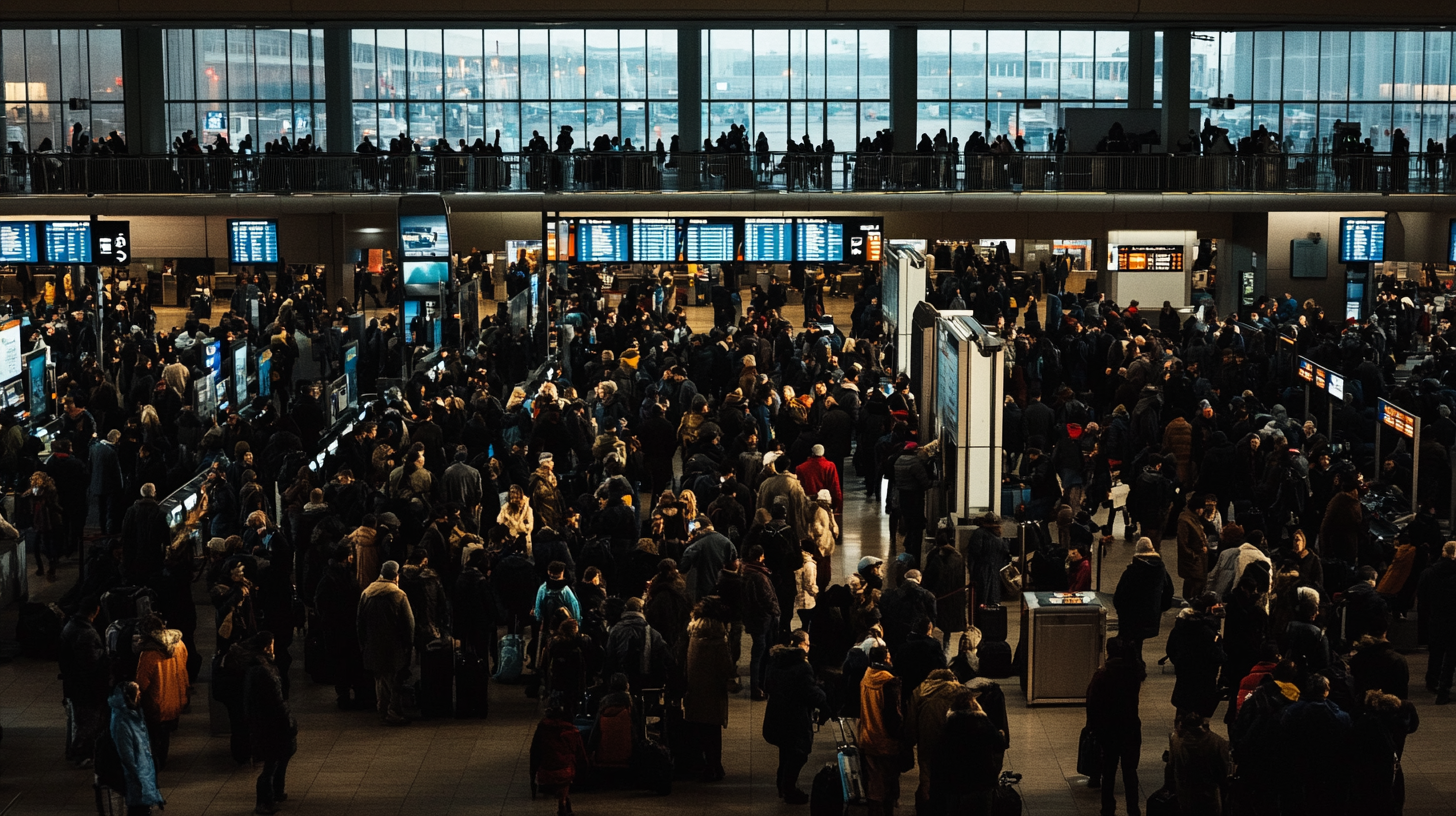
The Transportation Security Administration (TSA) anticipated screening over 39 million travelers nationwide from December 19 to January 2. Airports were stretched to their limits, with long security lines and crowded terminals becoming the norm. In some cases, security wait times exceeded two hours, causing passengers to miss flights despite arriving early. Reports indicated that some travelers encountered extensive waits at baggage claims, adding to the frustration. The scenes of overwhelmed airport staff trying to manage irate passengers became commonplace, reflecting the immense pressure on all involved.
Airlines, operating at near or full capacity, struggled to manage the influx. Domestic airfares spiked to over $320, although this was lower than the previous year’s peak. The slight decline was attributed to airlines restoring capacities to pre-pandemic levels. However, the increase in demand, coupled with operational challenges, led to overbooked flights and involuntary bumping of passengers , further fueling dissatisfaction among travelers.
Human Stories Amid the Chaos
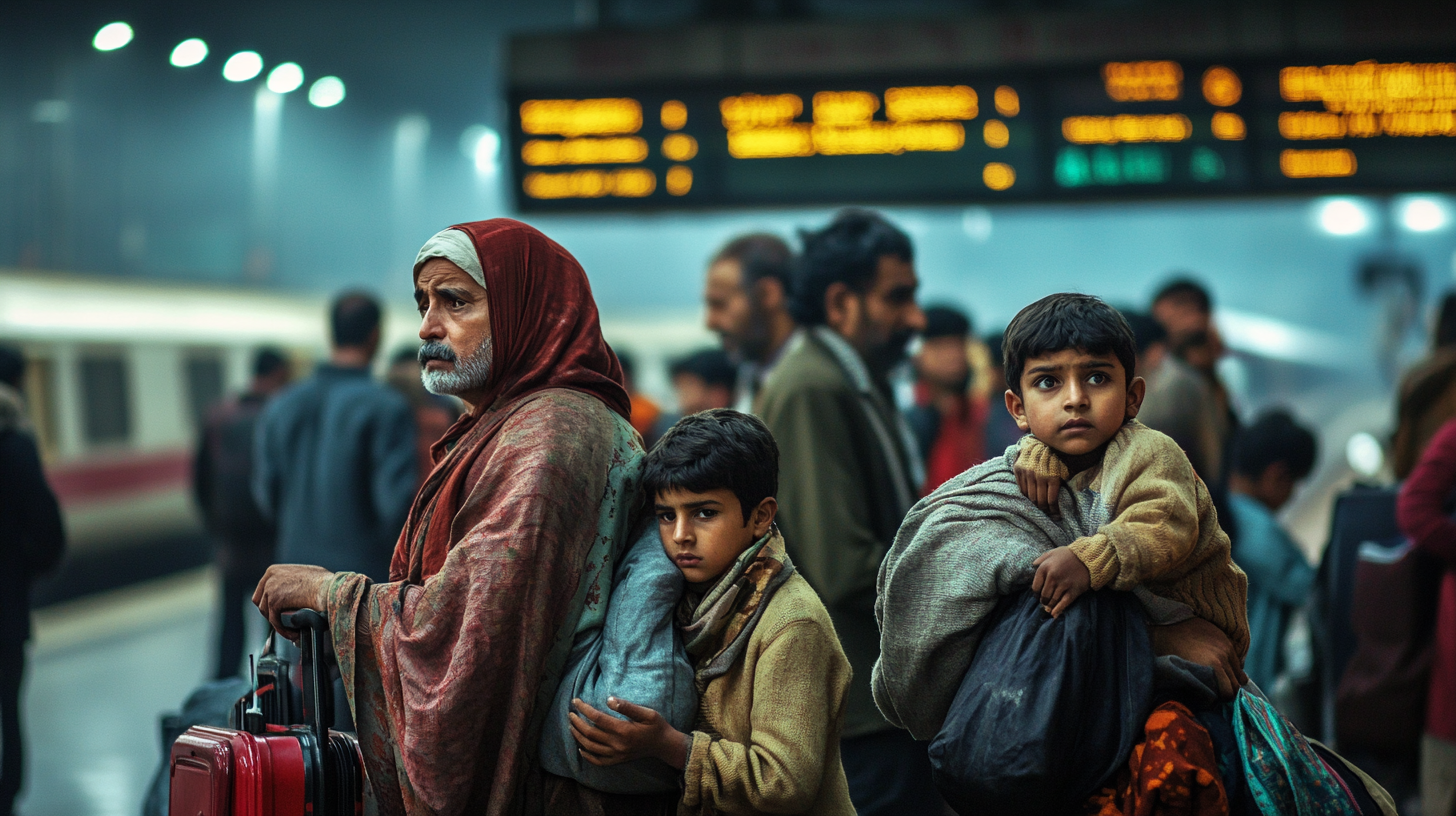
Behind the statistics and operational challenges were the personal experiences of millions of travelers. Families eager to reunite for the holidays found themselves stuck in airports or on the tarmac. The widespread delays led to missed connections, ruined plans, and mounting frustrations. Stories of families spending Christmas in airport terminals and children writing letters to Santa from delayed flights captured the emotional impact of the travel chaos.
Some passengers reported having to deplane after waiting onboard for extended periods, sometimes exceeding the Department of Transportation’s tarmac delay limits. Communication breakdowns exacerbated the situation, with many travelers feeling left in the dark about the status of their flights. The lack of timely information led to confusion and anxiety, as passengers scrambled to find alternative arrangements. The strain on airline staff and resources was evident, as they grappled with providing updates and assistance to the overwhelming number of affected passengers. Flight attendants and ground staff often bore the brunt of passenger frustrations, despite working under challenging conditions themselves.
The Role of Airlines and Authorities
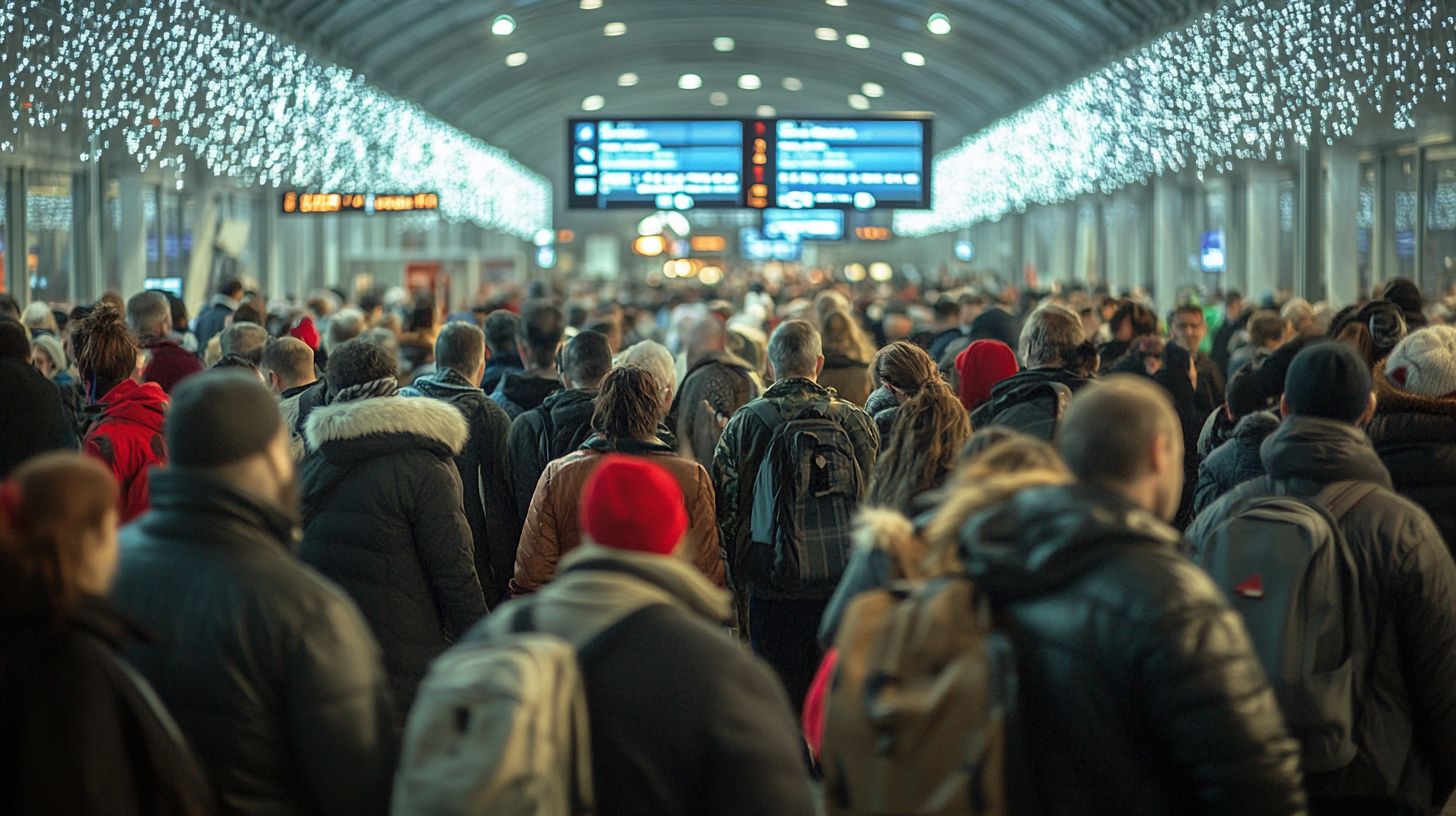
In the aftermath, airlines faced scrutiny over their handling of the disruptions. In Canada, major airlines including Sunwing, WestJet, and Air Canada apologized to Members of Parliament (MPs) for the chaos experienced during the holiday season. Executives cited extreme weather and staffing issues as primary causes, but lawmakers questioned whether the airlines had adequately prepared for predictable challenges. The hearings shed light on systemic issues within the airline industry’s crisis management , calling for greater accountability.
Sunwing Airlines, in particular, received 7,000 complaints after canceling 67 flights. Executives revealed struggles due to a denied request to hire 63 temporary foreign pilots, contributing to staffing shortages. This admission sparked debate over labor practices and reliance on temporary foreign workers. The Canadian Transport Minister, Omar Alghabra, labeled the treatment of passengers as “unacceptable” and called for a comprehensive review. Discussions emphasized the need for improved communication, infrastructure investment, and enhanced consumer protection laws. The situation highlighted the critical role of regulatory oversight in protecting travelers’ rights during mass disruptions.
Navigating Holiday Travel Chaos: Lessons Learned
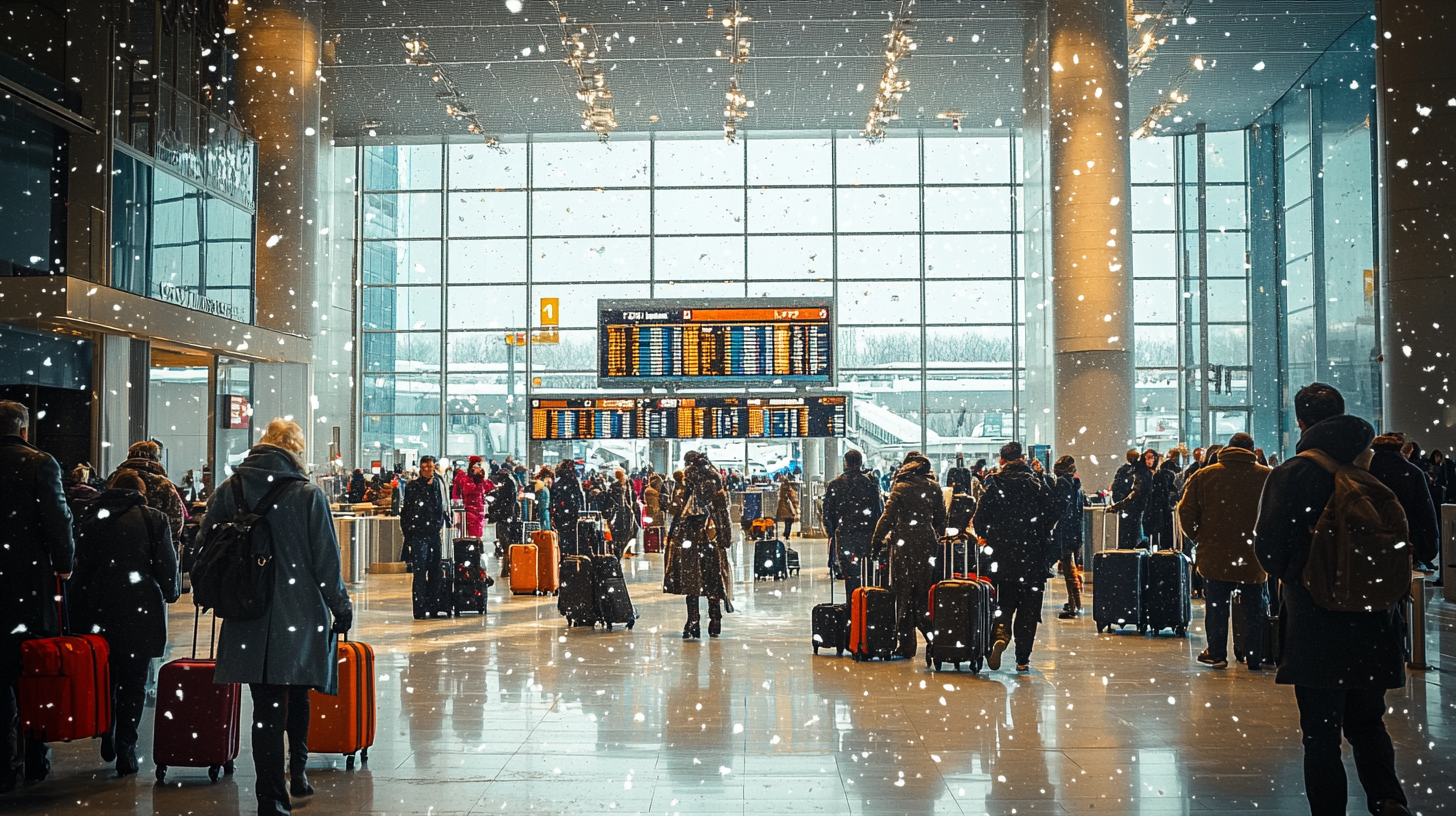
The tumultuous travel period highlighted the importance of preparation and adaptability. Experts, such as Jennifer Byrne, CEO of Tropical Travelers, emphasized strategies to reduce stress during such times. These strategies are designed to help travelers navigate the unpredictability of peak travel seasons and mitigate the impact of unforeseen disruptions:
- Book Early: Securing travel and accommodations well in advance can provide more options and better deals. Early booking also allows travelers to choose the most convenient routes and times, potentially avoiding the busiest periods.
- Flexible Tickets: Opt for changeable tickets and avoid basic economy fares to allow for adjustments without hefty fees. Flexibility can be crucial when flights are delayed or canceled, enabling passengers to rebook more easily.
- Travel Insurance: Consider policies that cover delays and cancellations. Comprehensive travel insurance can offer peace of mind and financial protection. Some credit cards, like the Chase Sapphire Preferred®, offer travel insurance benefits. Understanding the benefits of travel insurance policies can help travelers make informed decisions.
- Minimal Luggage: Avoid checking bags to sidestep baggage claim delays and the risk of lost luggage. Pack essentials in carry-ons, including medications, important documents, and a change of clothes.
- Monitor Weather and Alerts: Stay informed about weather updates and sign up for real-time travel alerts from airlines and news outlets. Utilizing apps and services that provide instant notifications can help travelers adjust plans proactively.
- Utilize Security Programs: Programs like TSA PreCheck and Clear can expedite the security screening process, saving valuable time, especially in congested airports. Enrolling in these programs ahead of time can significantly reduce wait times.
- Plan for Delays: Build in extra time for connections and consider strategic layovers in cities less affected by severe weather. Choosing alternative travel routes during peak seasons can make a significant difference in ensuring timely arrivals.
Looking Ahead
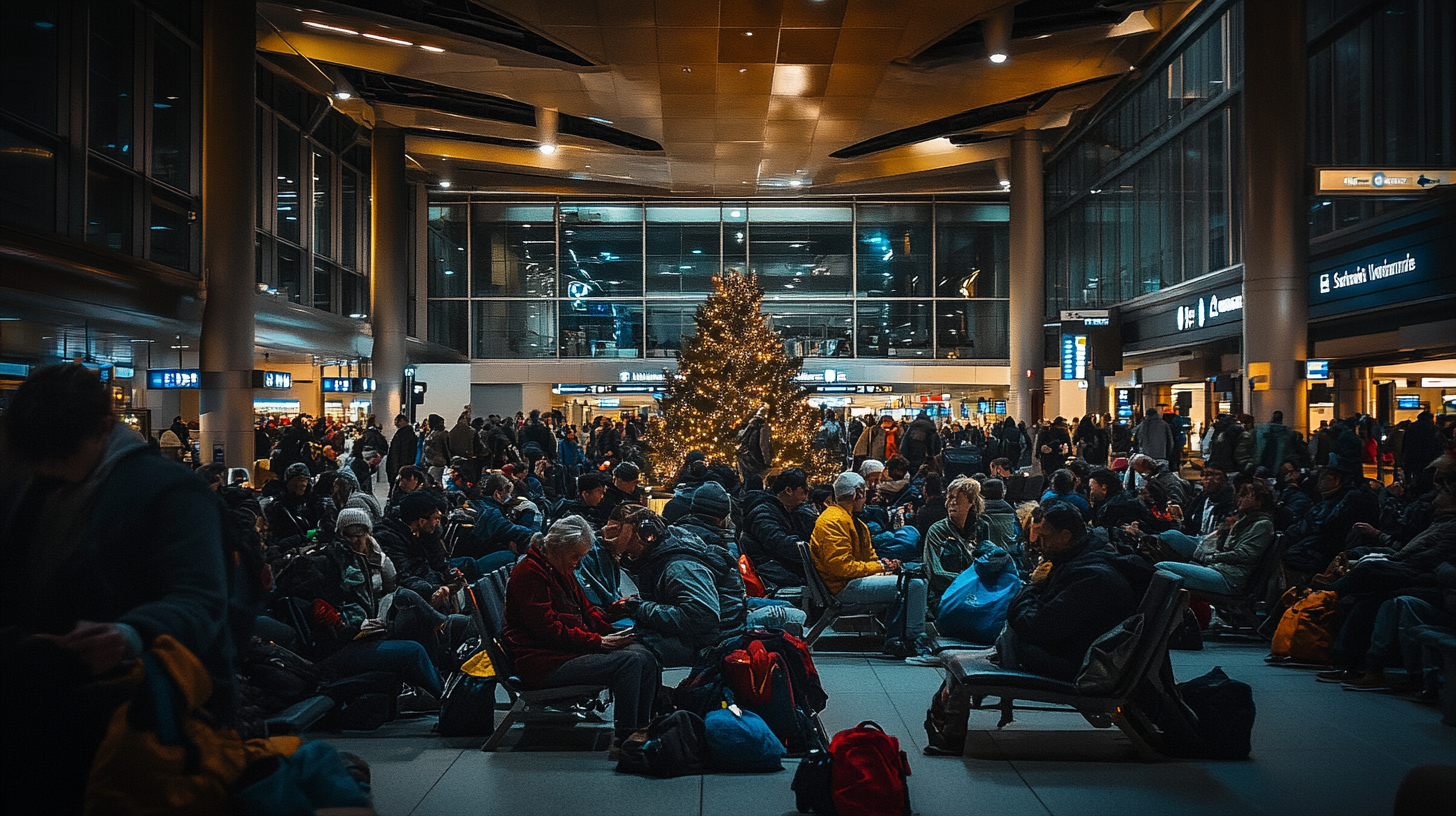
Despite the challenges faced, there is optimism for future travel seasons. Airlines are working towards restoring capacities and addressing staffing issues. Investments in technology and infrastructure aim to enhance operational efficiency. The experiences from this past season serve as valuable lessons for both travelers and industry stakeholders. By understanding the factors that led to the holiday chaos, airlines can implement strategies to prevent recurrence. This includes improving crisis management protocols and increasing transparency with passengers.
Authorities and airlines are considering changes to improve resilience against similar disruptions. Discussions are underway about strengthening regulations around passenger compensation and rights during flight cancellations and delays. There is a recognized need for better infrastructure, enhanced communication strategies, and updated policies to protect passengers’ rights. Collaboration between industry players and government agencies is seen as essential in building a more robust travel ecosystem. The focus is on creating systems that can withstand unexpected pressures, ensuring that future holiday seasons are remembered for joy and togetherness rather than travel nightmares.
Final Thoughts
The holiday travel chaos of the recent Christmas season was a culmination of record-breaking traveler numbers, severe weather events, and unforeseen technical glitches. It tested the patience and adaptability of travelers and highlighted significant areas for improvement within the travel industry. The convergence of these factors created a perfect storm that few could have predicted in its entirety.
As we move forward, the hope is that lessons learned will lead to more robust systems, better preparedness, and a smoother experience for all during future holiday seasons. The resilience shown by both travelers and industry professionals offers a foundation upon which to build stronger practices.
Travel remains an integral part of holiday traditions, connecting loved ones across distances and enriching lives with shared experiences. With careful planning, industry cooperation, and a willingness to adapt, we can look forward to less turbulent journeys ahead. The spirit of the holidays endures, and with it, the aspiration for safe, efficient, and joyful travel experiences for all.
Follow us back to Seat 5A for more insights and updates on travel trends and tips.






